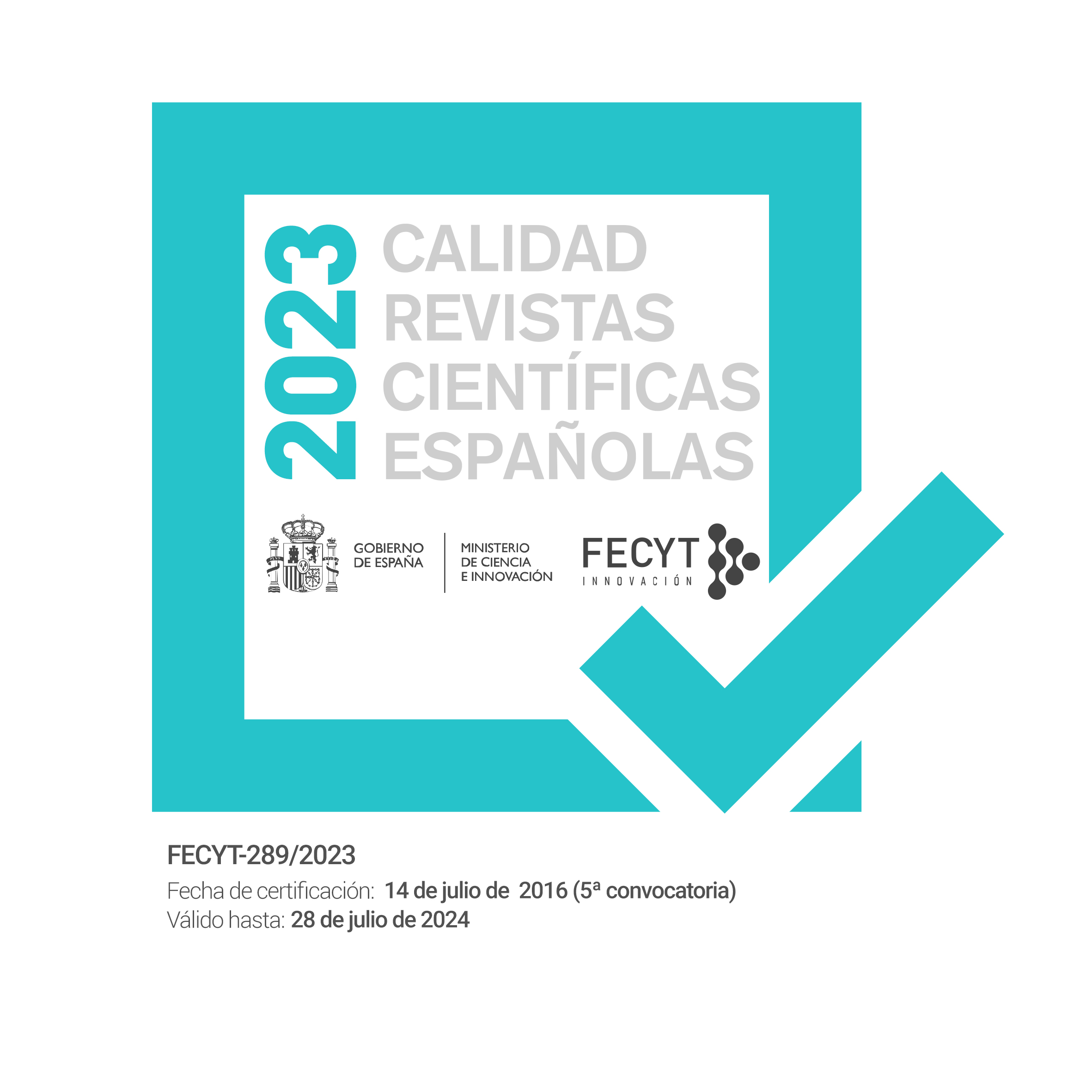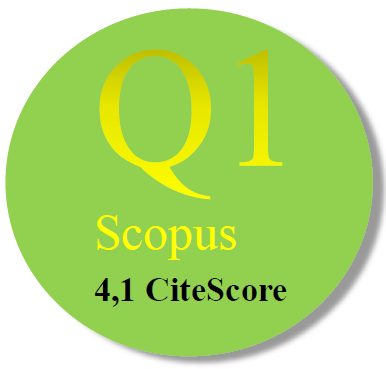Coding and educational robotics and their relationship with computational and creative thinking. A compressive review.
Abstract
New technological tools, technology-based services and support are being introduced into our daily lives faster than ever. Among these technological advances robotic technology has increased dramatically in recent years, the same as its inclusion in education. The purpose of the paper is offer a compressive review about computational and creative thinking definitions and its measurement, furthermore, its relationship with coding, educational robotics and the maker movement. The review is based in the most cited papers publish in the last 10 years, retrieved from google scholar and other prestigious databases. The review has showed that with the use of coding and robotics kits there is generally no correct way to solve a challenge, and computational and creative thinking are related to find efficient and good solution to problems. Not having a correct answer but multiple ways of addressing a problem is an experience that many teachers are not familiar with. That is why more scientific research is needed in this regard, in terms of successful interventions that show evidence and good practices that serve as training and guides teachers.
Downloads
References
Alsina, A., & Acosta, Y. (2018). Iniciación al álgebra en Educación Infantil a través del pensamiento computacional: Una experiencia sobre patrones con robots educativos programables. Revista Iberoamericana de Educación Matemática, 52, 218-235. https://bit.ly/2PC1hLt
Bell, P., Hoadley, C.M., & Linn, M.C. (2004). Design-based research. In M.C. Linn, E.A. Davis, & P. Bell (Eds.), Internet environments for science education (pp. 73-88). Mahwah, New Jersey, Lawrence Erlbaum Associates.
Blikstien, P. (2013). Digital fabrication and ‘making in education”: The democratization of invention. In J. W. H. C. Buching (Ed.), FabLabs: Of makers and inventors. Bielefeld, Germany: Transcript Publishers.
Brennan, K., & Resnick, M. (2012). New frameworks for studying and assessing the development of computational thinking. In Proceedings of the 2012 Annual Meeting of the American Educational Research Association (AERA) (pp. 1-25). Vancouver, Canada.
Bruni, F., & Nisdeo, M. (2017). Educational robots and children’s imagery: A preliminary investigation in the first year of primary school. Research on Education and Media, 9(1), 37-44. https://doi.org/10.1515/rem-2017-0007
Chen, G., Shen, J., Barth-Cohen, L., Jiang, S., Huang, X., & Eltoukhy, M.M. (2017). Assessing elementary students’ computational thinking in everyday reasoning and robotics programming. Computers and Education, 109, 162-175. https://doi.org/10.1016/j.compedu.2017.03.001
Davies, D., Jindal-Snape, D., Collier, C., Digby, R., Hay, P., & Howe, A. (2013). Creative learning environments in education. A systematic literature review. Thinking Skills and Creativity, 8, 80–91. doi:10.1016/J.TSC.2012.07.004
Dougherty, D. (2012). The Maker Movement. Innovations, 7(3), 11–14.
Durak, H.Y., & Saritepeci, M. (2018). Analysis of the relation between computational thinking skills and various variables with the structural equation model. Computers & Education, 116, 191-202. https://doi.org/10.1016/j.compedu.2017.09.004
Fisher, R. (2005). Teaching children to think. Cheltenham: Nelson Thomes Ltd.
FNBE (2014). The National Core Curriculum for Basic Education. Helsinki: FNBE National Board of Education. Retrieved from http://www.oph.fi/ops2016
García-Peñalvo, F. J., & Mendes, A. J. (2018). Exploring the computational thinking effects in pre-university education. Computers in Human Behavior, 80 (2018) 407-411. Doi: https://doi.org/10.1016/j.chb.2017.12.005
García-Peñalvo, F.J., Rees, A.M., Hughes, J., Jormanainen, I., Toivonen, T., & Vermeersch, J. (2016). A survey of resources for introducing coding into schools. Proceedings of the Fourth International Conference on Technological Ecosystems for Enhancing Multiculturality (TEEM’16) (pp.19-26). Salamanca, Spain, November 2-4, 2016. New York: ACM. https://doi.org/10.1145/3012430.3012491
García-Valcárcel, A., y Caballero-González, Y.A. (2019). Robotics to develop computational thinking in early Childhood Education. Comunicar, n. 59, v. XXVII, 63-72. DOI: https://doi.org/10.3916/C59-2019-06
Grover, S. & Pea, R. (2013). Computational Thinking in K–12 A Review of the State of the Field. Educational Researcher. 42. doi:10.3102/0013189x12463051
Grover, S. (2018, March 13). The 5th 'C' of 21st century skills? Try computational thinking (not coding. Retrieved from EdSurge News: https://edtechbooks.org/-Pz
Halinen, I. (2018). The new educational curriculum in Finland. In M. Matthes, L. Pulkkinen, C. Clouder, & B. Heys (Eds.), Improving the quality of childhood in Europe, 7, 75-89. Brussels: Alliance for Childhood European Network Foundation. Retrieved from http://www.allianceforchildhood.eu/files/Improving_the_quality_of_Childhood_Vol_7/QOC%20V7%20CH06%20DEF%20WEB.pdf
Halverson, E.R. & Sheridan, K. (2014). The maker movement in education. Harvard Education Review, 84(4), 495-504.
Hershkovitz, A., Sitman, R., Israel-Fishelson, R., Eguíluz, A., Garaizar, P., & Guenaga, M. (2019). Creativity in the acquisition of computational thinking, Interactive Learning Environments, 27:5-6, 628-644, DOI: 10.1080/10494820.2019.1610451
International Society for Technology in Education - ISTE. (2018). Computational Thinking For All. Retrieved from https://www.iste.org/explore/article Detail?articleid=152
Jesson, J. K., Matheson, L., & Lacey, F. M. (2011). Doing your literature review: Traditional and systematic techniques. Thousand Oaks, California: Sage.
Johnson, R. B., & Christensen, L. (2017). Educational research: Quantitative, qualitative and mixed approaches (6th Ed.). Thousand Oaks, CA: Sage.
Juuti, K., & Lavonen, J. (2006). Design-Based Research in Science Education. Nordina 3(1), 54-68.
Koh, K. H., Basawapatna, A., Bennett, V., & Repenning, A. (2010). Towards the automatic recognition of computational thinking for adaptive visual language learning. In 2010 IEEE symposium on visual languages and human-centric computing, VL/HCC 2010 (Leganes, Madrid, Spain, 21-25 Sept. 2010) (pp. 59e66). USA: IEEE.
Krajcik, J., & Shin, N. (2015). Project-based learning. In K. Sawyer (Ed.), The Cambridge handbook of the learning sciences. (2nd ed., pp. 275-297). New York, NY: Cambridge University Press.
Martin, L. (2015). The promise of the Maker Movement for education. Journal of Pre-College Engineering Education Research (J-PEER), 5(1), 30-39. doi: 10.7771/2157-9288.1099
MEC (2016) Opettajankoulutuksen kehittämisohjelma [Development program for teachers’ -re- and in-service education]. Retrieved from https://minedu.fi/artikkeli/-/asset_publisher/opettajankoulutuksen-kehittamisohjelma-julkistettiin-opettajien-osaamista-kehitettava-suunnitelmallisesti-lapi-tyouran
MEC (2018). Peruskoulufoorumi luovutti esityksensä peruskoulun kehittämislinjauksiksi [The Basic School Forum published the developmental plan for the basic school]. Ministry of Education and Culture. Retrieved from http://minedu.fi/artikkeli/-/asset_publisher/peruskoulufoorumi-luovutti-esityksensa-peruskoulun-kehittamislinjauksiksi
Monroy-Hernández, A., & Resnick, M. (2008). Empowering Kids to create and share programmable media. Interactions, 15(2), 50–53.
OECD (2005). Definition and selection of competencies (DeSeCo): Executive summary. Paris: OECD Publishing. Retrieved from http://www.oecd.org/pisa/35070367.pdf
Oluk, A., & Korkmaz, Ö. (2016). Comparing students’ scratch skills with their computational thinking skills in terms of different variables. I. J. Modern Education and Computer Science, 8(11), 1–7.
Pala, F.K & Mıhçı, P. (2019): The effects of different programming trainings on the computational thinking skills, Interactive Learning Environments, DOI: 10.1080/10494820.2019.1635495
Rasinen, A., Ikonen, P. & Rissanen, T. (2006). Are girls equal in technology education? In M. J. De Vries and I. Mottier (Eds.), International handbook of technology education: Reviewing the past twenty years (pp. 448-459). Rotterdam: Sense Publishers.
Rodríguez-Martínez, J.A., González-Calero, J.A., & Sáez-López, J.M. (2019): Computational thinking and mathematics using Scratch: an experiment with sixth-grade students, Interactive Learning Environments, DOI: 10.1080/10494820.2019.1612448
Román-González M., Moreno-León J., & Robles G. (2019) Combining Assessment Tools for a Comprehensive Evaluation of Computational Thinking Interventions. In: Kong SC., Abelson H. (eds) Computational Thinking Education. Springer, Singapore
Román-González, M., Pérez-González, J.-C., & Jiménez-Fernández, C. (2017). Which cognitive abilities underlie computational thinking? Criterion validity of the Computational Thinking Test. Computers in Human Behavior, 72, 678e691. https://doi.org/10.1016/j.chb.2016.08.047.
Romero, M., Lepage, A., & Lille, B. (2017). Computational thinking development through creative programming in higher education. International Journal of Educational Technology in Higher Education, 14:42 DOI 10.1186/s41239-017-0080-z
Torrance, E. P. (1965). Scientific views of creativity and factors affecting its growth. Daedalus, 94(3), 663–681. doi:10.2307/20026936
Vahtivuori-Hänninen, S. H., Halinen, I., Niemi, H., Lavonen, J. M. J., Lipponen, L., & Multisilta, J. (2014). A new Finnish national core curriculum for basic education and technology as an integrated tool for learning. In Niemi, H., Multisilta, J., Lipponen, L. & M. Vivitsou (Eds.), Finnish innovations and technologies in schools: A guide towards new ecosystems of learning (pp. 33-44). Rotterdam: Sense Publishers.
Voogt, J. & Roblin, N.P. (2012). A comparative analysis of international frameworks for 21st century competences: Implications for national curriculum policies. Journal of Curriculum Studies, 44(3), 299-321. doi:10.1080/00220272.2012.668938
Wang, TH., Lim, K.Y.T., Lavonen, J., & Clark-Wilson, a. (2019). International Journal of Science and Mathematics Education, 17(Suppl 1):1. Doi: https://doi.org/10.1007/s10763-019-09999-8
Werner, L., Denner, J., Campe, S., & Kawamoto, D. C. (2012, February). The fairy performance assessment: Measuring computational thinking in middle school. In Proceedings of the 43rd ACM technical symposium on computer science education (pp. 215e220). ACM.
Wing, J. M. (2006). Computational thinking. Communications of the ACM, 49(3), 33–35.
Yiannoutsou, N., Nikitopoulou, S., Kynigos, C., Gueorguiev, I., & Fernandez, J. A. (2017). Activity plan template: a mediating tool for supporting learning design with robotics. In Robotics in Education (pp. 3-13). Springer, Cham.
Zapata-Ros, M. (2015). Pensamiento computacional: Una nueva alfabetización digital. RED. Revista de Educación a Distancia, 46. Retrieved from http://www.um.es/ead/red/46/zapata.pdf
Zapata-Ros, M. (2019). Pensamiento computacional desenchufado. Education in the knowledge society (EKS), (20). https://repositorio.grial.eu/handle/grial/1690
Las obras que se publican en esta revista están sujetas a los siguientes términos:
1. El Servicio de Publicaciones de la Universidad de Murcia (la editorial) conserva los derechos patrimoniales (copyright) de las obras publicadas, y favorece y permite la reutilización de las mismas bajo la licencia de uso indicada en el punto 2.
2. Las obras se publican en la edición electrónica de la revista bajo una licencia Creative Commons Reconocimiento-NoComercial-SinObraDerivada 3.0 España (texto legal). Se pueden copiar, usar, difundir, transmitir y exponer públicamente, siempre que: i) se cite la autoría y la fuente original de su publicación (revista, editorial y URL de la obra); ii) no se usen para fines comerciales; iii) se mencione la existencia y especificaciones de esta licencia de uso.
3. Condiciones de auto-archivo. Se permite y se anima a los autores a difundir electrónicamente las versiones pre-print (versión antes de ser evaluada) y/o post-print (versión evaluada y aceptada para su publicación) de sus obras antes de su publicación, ya que favorece su circulación y difusión más temprana y con ello un posible aumento en su citación y alcance entre la comunidad académica. Color RoMEO: verde.














